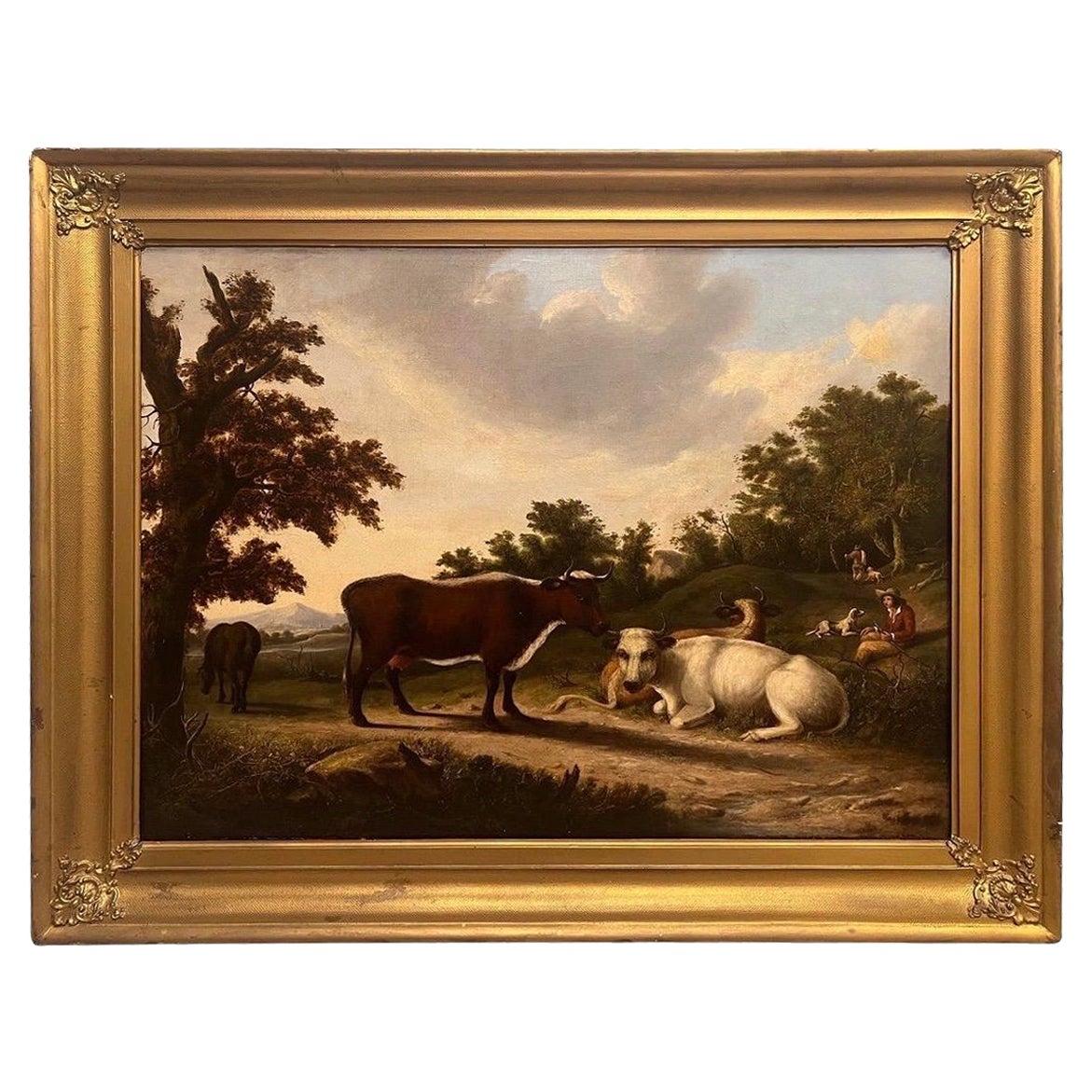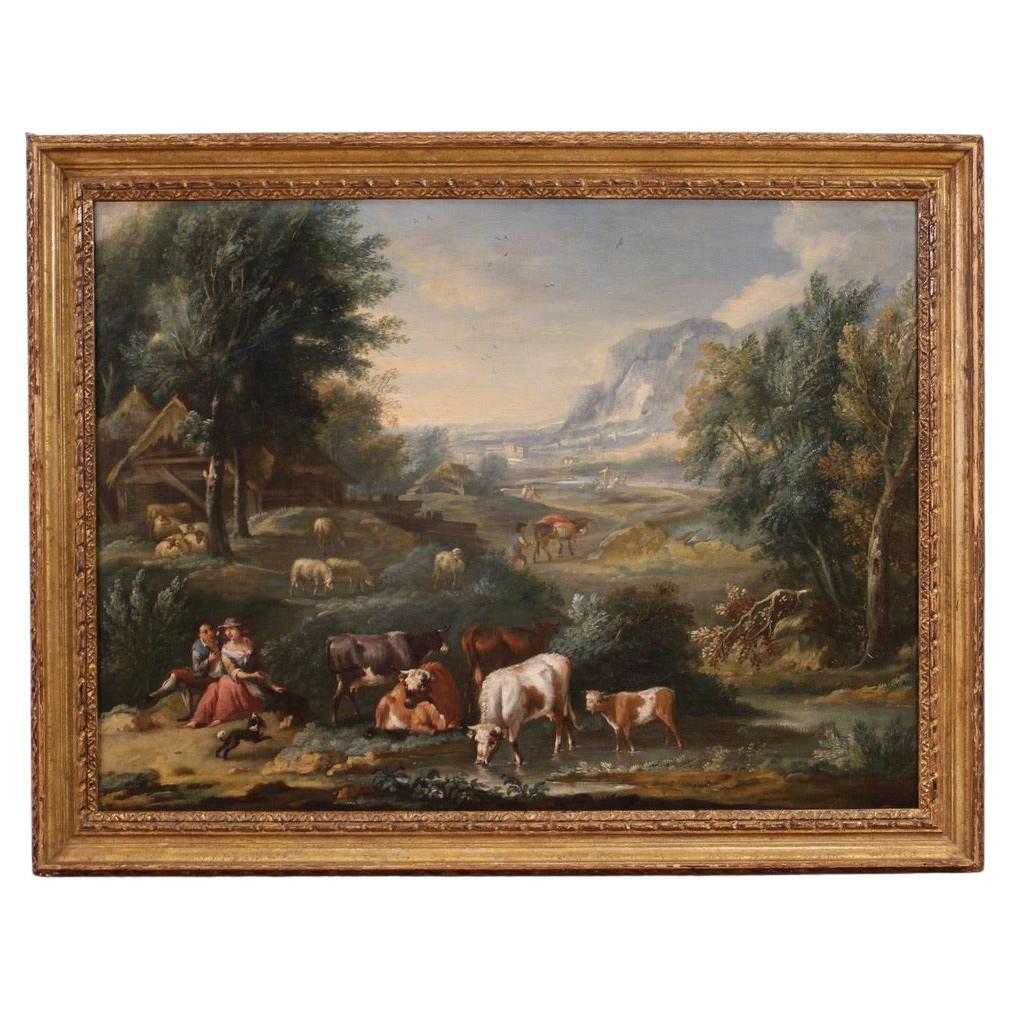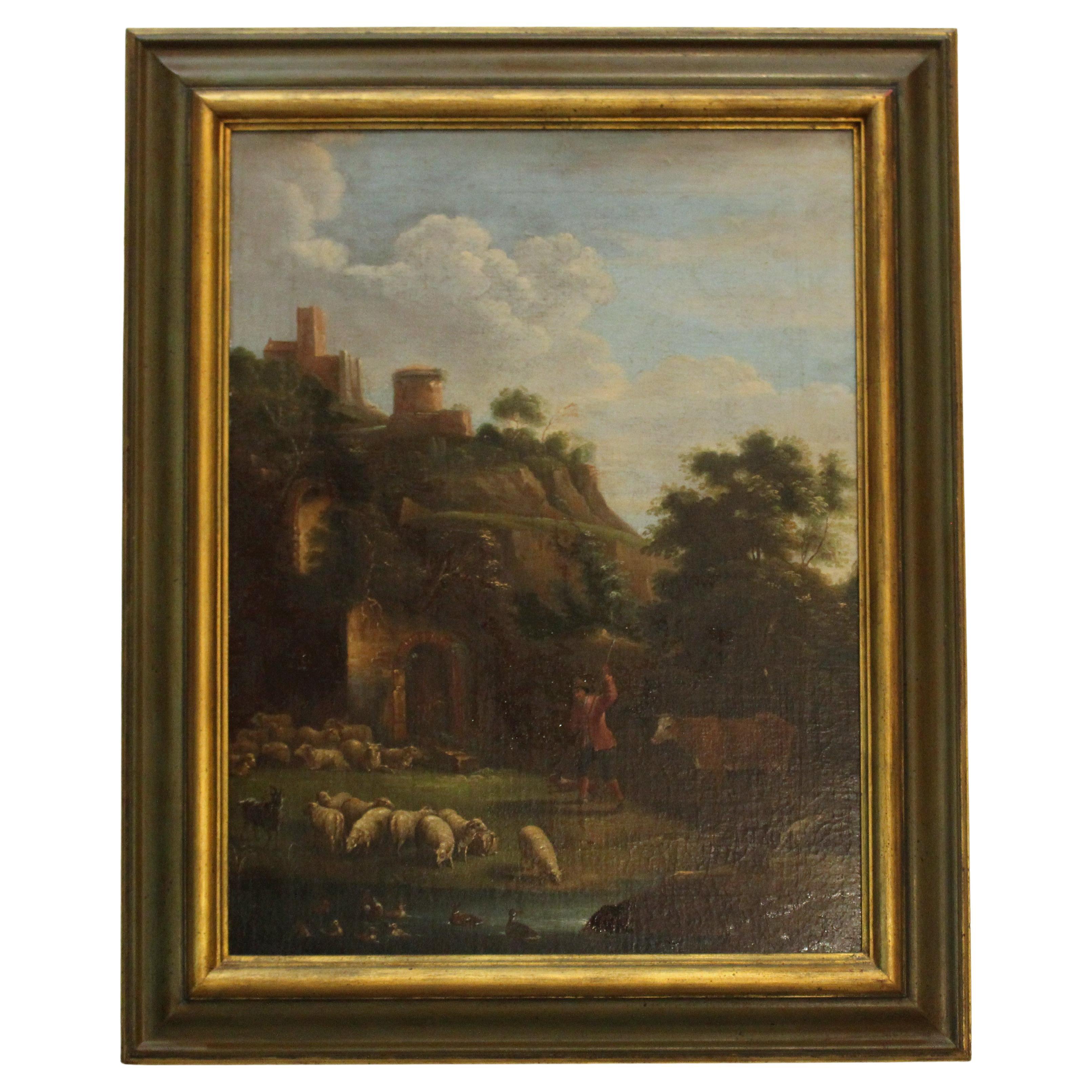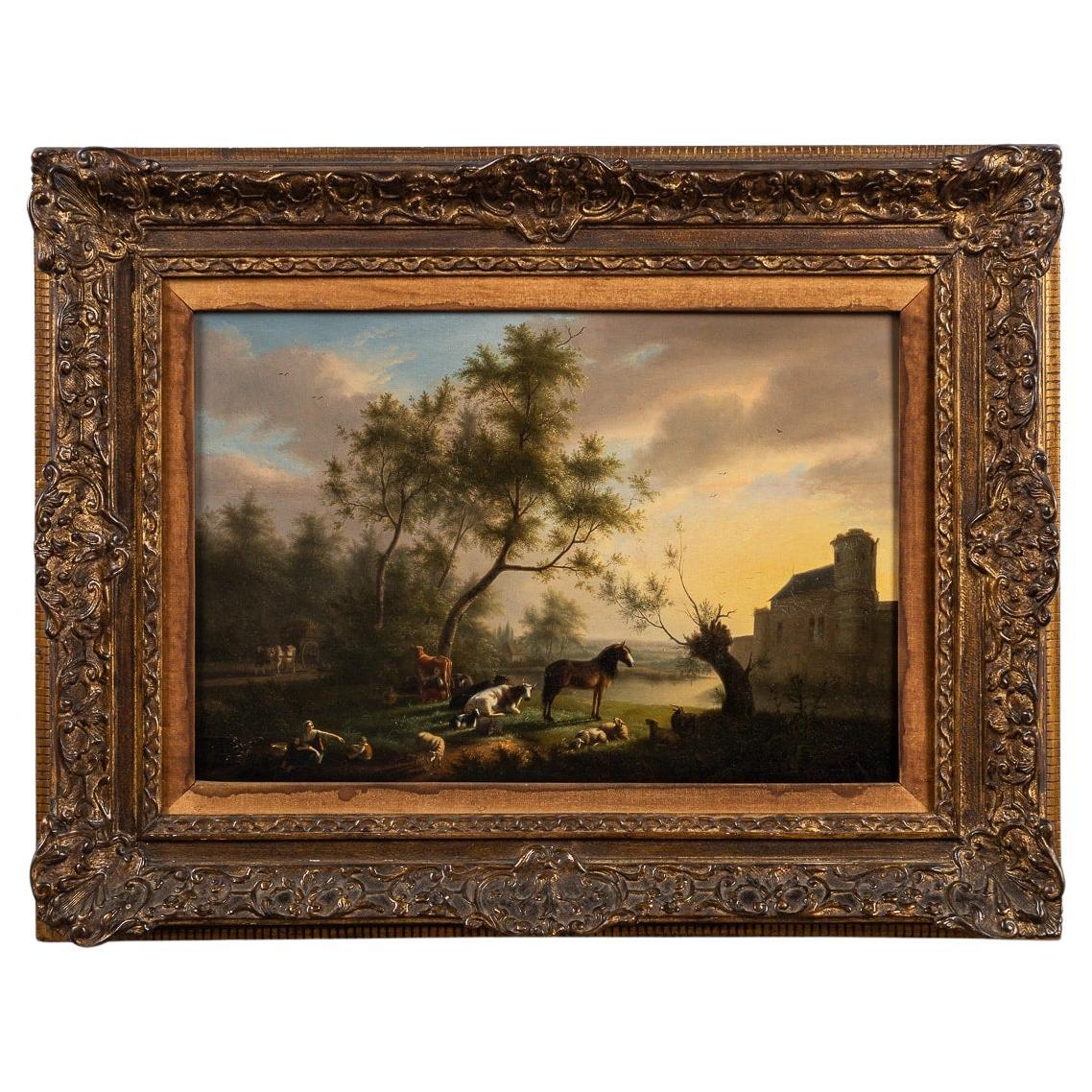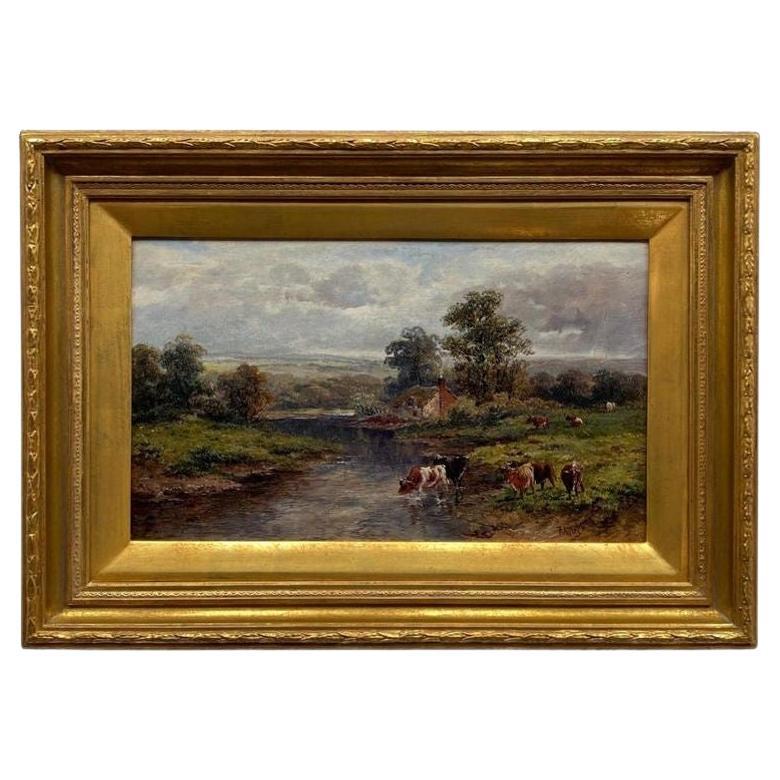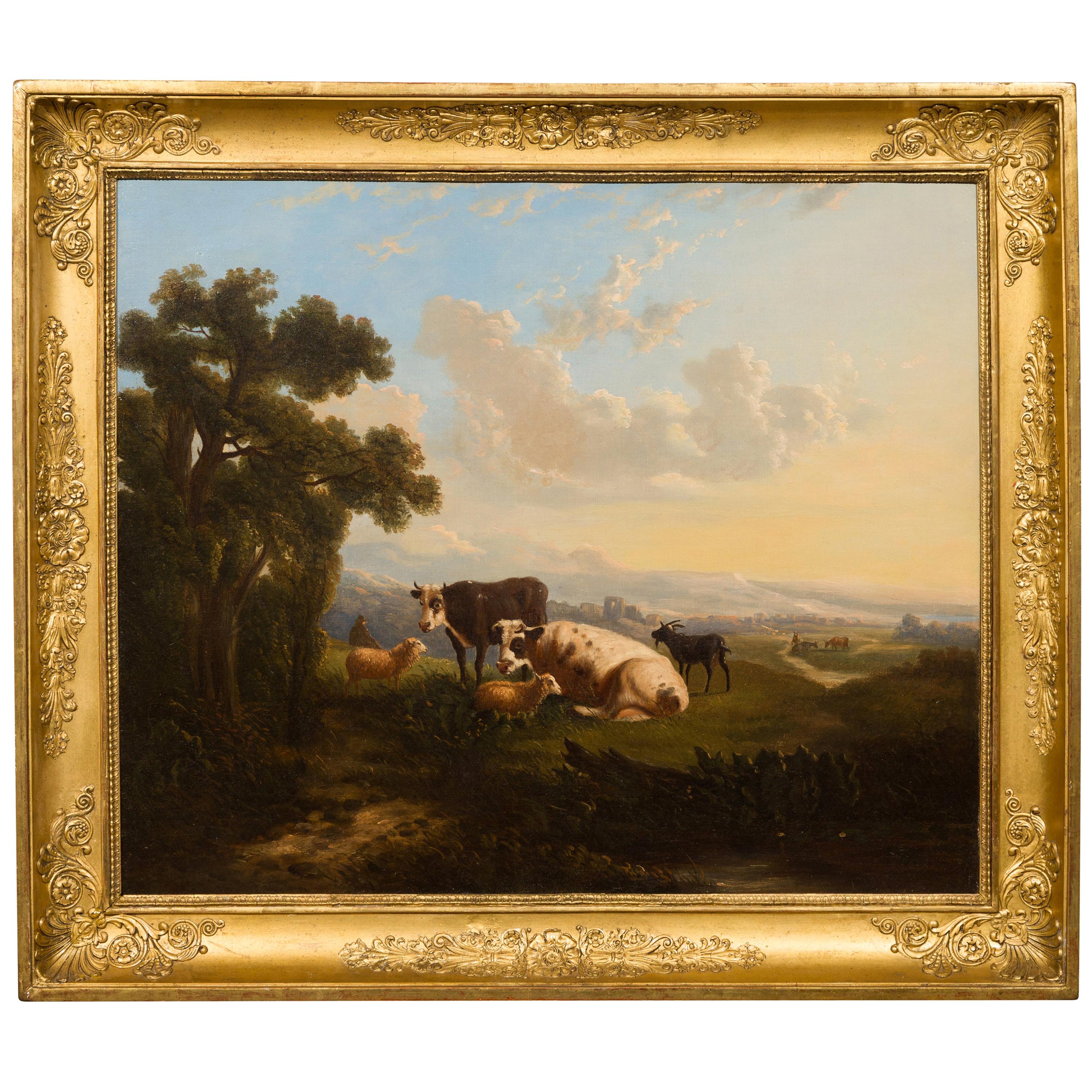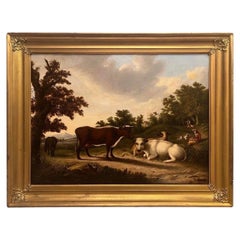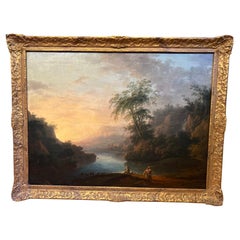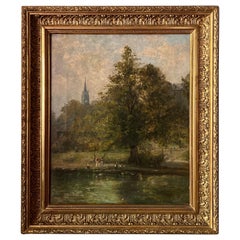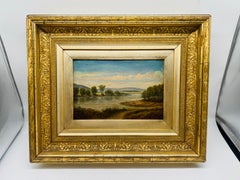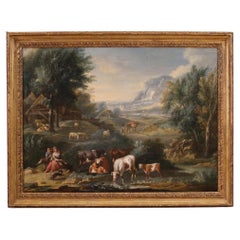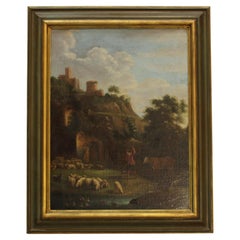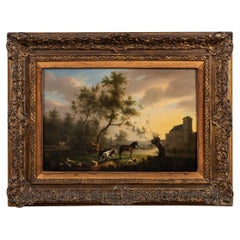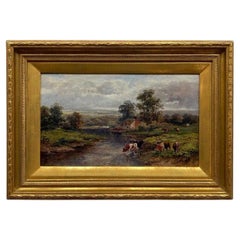Items Similar to 19th C. English School Oil Painting on Canvas of Capriccio and Cow Landscape
Want more images or videos?
Request additional images or videos from the seller
1 of 6
19th C. English School Oil Painting on Canvas of Capriccio and Cow Landscape
$1,196
$1,49520% Off
£907.50
£1,134.3720% Off
€1,037.64
€1,297.0520% Off
CA$1,670.49
CA$2,088.1120% Off
A$1,857.36
A$2,321.6920% Off
CHF 969.81
CHF 1,212.2620% Off
MX$22,608.53
MX$28,260.6720% Off
NOK 12,374.33
NOK 15,467.9120% Off
SEK 11,594.16
SEK 14,492.7020% Off
DKK 7,744.11
DKK 9,680.1420% Off
Shipping
Retrieving quote...The 1stDibs Promise:
Authenticity Guarantee,
Money-Back Guarantee,
24-Hour Cancellation
About the Item
A fine quality 19th century english school landscape painting. Oil on canvas depicting capriccio ruins in the background and animals grazing in the foreground. Unsigned. Displays excellent.
- Dimensions:Height: 26 in (66.04 cm)Width: 29.75 in (75.57 cm)Depth: 2 in (5.08 cm)
- Materials and Techniques:
- Period:
- Date of Manufacture:1880s
- Condition:Repaired: Canvas has a patch and partial in paint present. Wear consistent with age and use.
- Seller Location:Atlanta, GA
- Reference Number:1stDibs: LU7838231964042
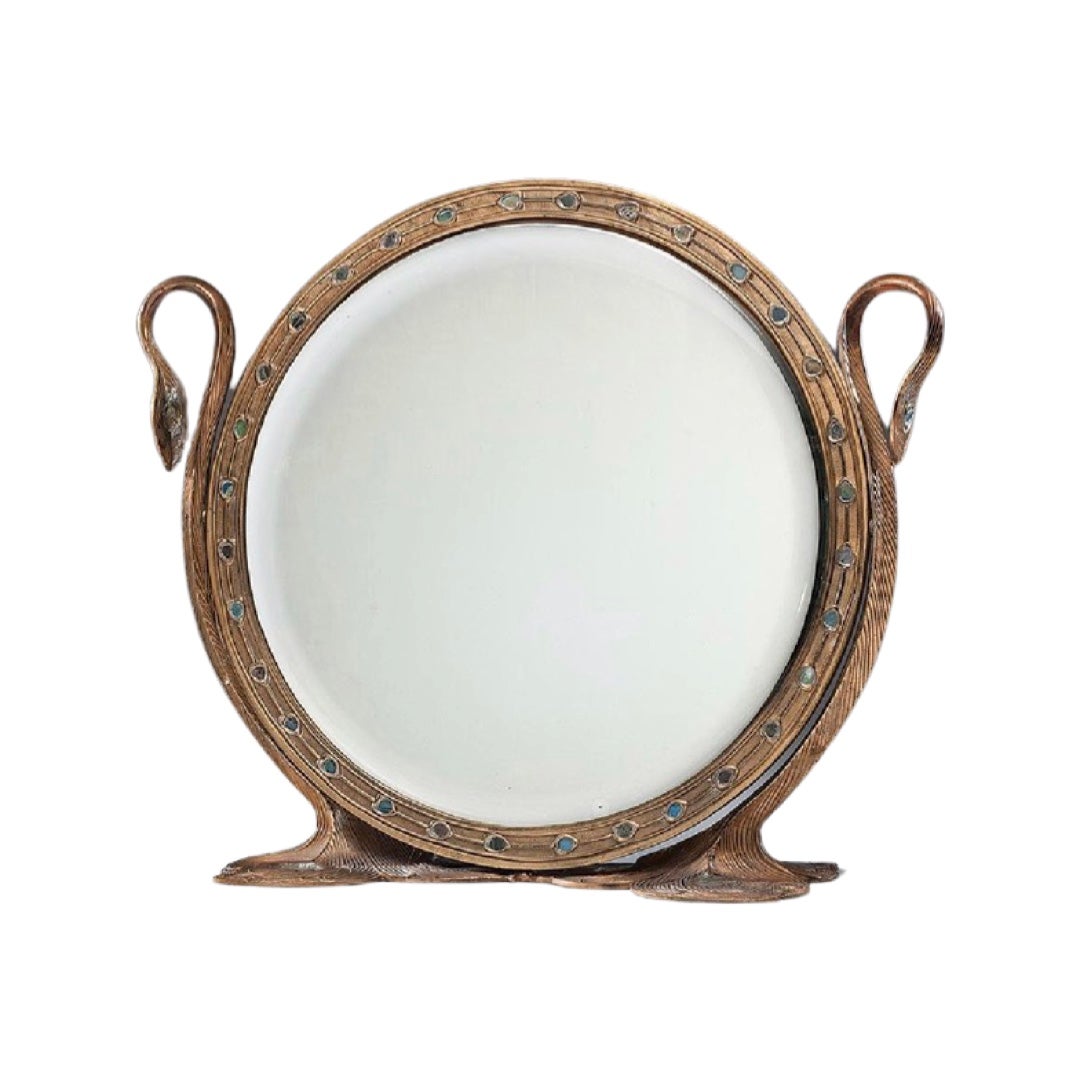
About the Seller
5.0
Platinum Seller
Premium sellers with a 4.7+ rating and 24-hour response times
Established in 2012
1stDibs seller since 2022
205 sales on 1stDibs
Typical response time: <1 hour
- ShippingRetrieving quote...Shipping from: Atlanta, GA
- Return Policy
Authenticity Guarantee
In the unlikely event there’s an issue with an item’s authenticity, contact us within 1 year for a full refund. DetailsMoney-Back Guarantee
If your item is not as described, is damaged in transit, or does not arrive, contact us within 7 days for a full refund. Details24-Hour Cancellation
You have a 24-hour grace period in which to reconsider your purchase, with no questions asked.Vetted Professional Sellers
Our world-class sellers must adhere to strict standards for service and quality, maintaining the integrity of our listings.Price-Match Guarantee
If you find that a seller listed the same item for a lower price elsewhere, we’ll match it.Trusted Global Delivery
Our best-in-class carrier network provides specialized shipping options worldwide, including custom delivery.More From This Seller
View AllLarge Scale 19th Century English School Bucolic Landscape Oil Painting
Located in Atlanta, GA
Exceptional Large Scale 19th Century English School Bucolic Landscape Oil Painting. While there is no signature or specific attribution to the artist’s hand - it is with a doubt an e...
Category
Antique 19th Century Paintings
Materials
Canvas, Giltwood, Paint
$7,160 Sale Price
20% Off
18th Century, Old Master European Landscape Painting Italian School
Located in Atlanta, GA
Italian School, 18th century.
A masterful example of 18th-century Italian School artistry, this Old Master landscape painting captures the sublime beauty of an idealized European co...
Category
Antique 18th Century Italian Baroque Paintings
Materials
Canvas, Giltwood, Paint
$6,000 Sale Price
20% Off
19th Century, English School Landscape O/C "Salisbury Cathedral"
Located in Atlanta, GA
English School, 19th century.
A fine quality English School oil painting on canvas of a duck pond which has a small family boarding a tiny boat. Surrounded by lush trees, a dirt pat...
Category
Antique 19th Century British Paintings
Materials
Canvas, Giltwood, Paint
$2,316 Sale Price
20% Off
19th Century, American School Oil on Board Landscape - New Hampshire School
Located in Atlanta, GA
This exquisite 19th-century American School oil on board is a captivating example of the New Hampshire School, renowned for its contributions to American landscape painting. The comp...
Category
Antique 19th Century American Paintings
Materials
Giltwood, Masonite
$1,196 Sale Price
20% Off
John Bunyan Bristol (American, 1826–1909) "A Berkshire Landscape" Oil On Canvas
By John Bunyan Bristol
Located in Atlanta, GA
This captivating oil on canvas, titled "A Berkshire Landscape," is a remarkable example of the work of John Bunyan Bristol, a distinguished 19th-century American artist known for his...
Category
Antique Mid-19th Century American Paintings
Materials
Canvas, Giltwood, Paint
$3,916 Sale Price
20% Off
17th Century, "Shepards Solace Among The Flock" Flemish School Oil
Located in Atlanta, GA
This exquisite oil painting, is a masterful depiction of a pastoral scene that epitomizes the serene beauty of rural life. Likely created in the 17th century, the work surely of Flem...
Category
Antique 17th Century Belgian Baroque Paintings
Materials
Canvas, Giltwood, Paint
You May Also Like
18th Century Oil on Canvas Italian Bucolic Landscape Painting, 1770
Located in Vicoforte, Piedmont
Venetian school of the second half of the 18th century. Oil painting on canvas depicting an Arcadian landscape of pastoral genre. This type of pictorial representation established it...
Category
Antique 1770s Italian Paintings
Materials
Canvas
Late 18th-Early 19th Century Continental Landscape Painting
Located in Chapel Hill, NC
Late 18th-early 19th century capriccio (imaginary) landscape, Continental. A shepherd & animals at hillside "barns" below Italianate church & fortress. Acquired in the late 1940s by ...
Category
Antique Early 19th Century European Romantic Paintings
Materials
Canvas
Antique 19th Century Oil On Panel Pastoral Setting, Martin Verstappen 1773-1852
Located in Royal Tunbridge Wells, Kent
An exceptional 19th-century depiction of a pastoral setting by the hand of Martin Verstappen. The foreground features a mother with her two children, nestled amidst lush tall grass. ...
Category
Antique 19th Century European Other Paintings
Materials
Giltwood, Paint
19th Century Pastoral Landscape Oil Painting by F. Allen
Located in Los Angeles, CA
A serene 19th century pastoral landscape oil on canvas signed by F. Allen, depicting a tranquil countryside scene. The composition features cows drinking from a calm river beside a r...
Category
Antique 19th Century British Paintings
Materials
Canvas
Italian 19th Century Framed Oil on Canvas Painting Depicting Cows in Pastures
Located in Atlanta, GA
An Italian oil on canvas painting from the mid-19th century depicting cows, sheep and goats in pastures, in antique giltwood frame. Created in Italy during the third quarter of the 1...
Category
Antique Mid-19th Century Italian Paintings
Materials
Canvas, Paint, Giltwood
20th Century Oil on Canvas Italian Bucolic Landscape Painting, 1950
Located in Vicoforte, Piedmont
Italian painting from the mid-20th century. Work oil on canvas (applied on board, see photo) depicting bucolic landscape with characters and city in the background of good pictorial ...
Category
Mid-20th Century Italian Paintings
Materials
Canvas
